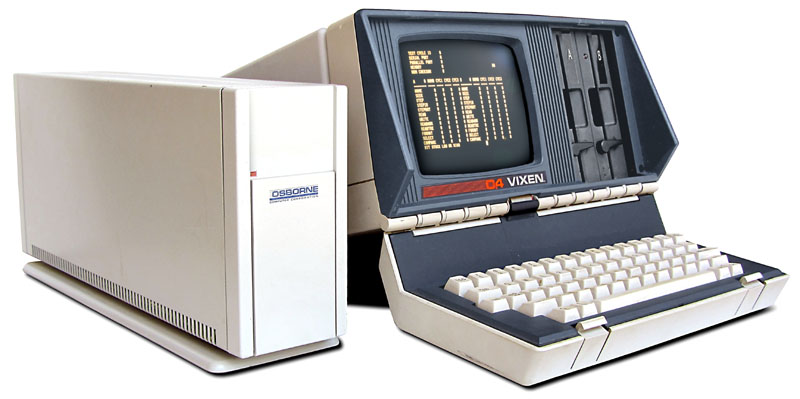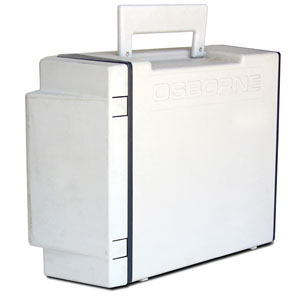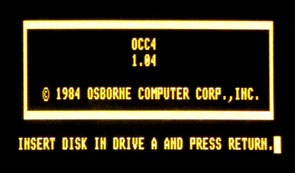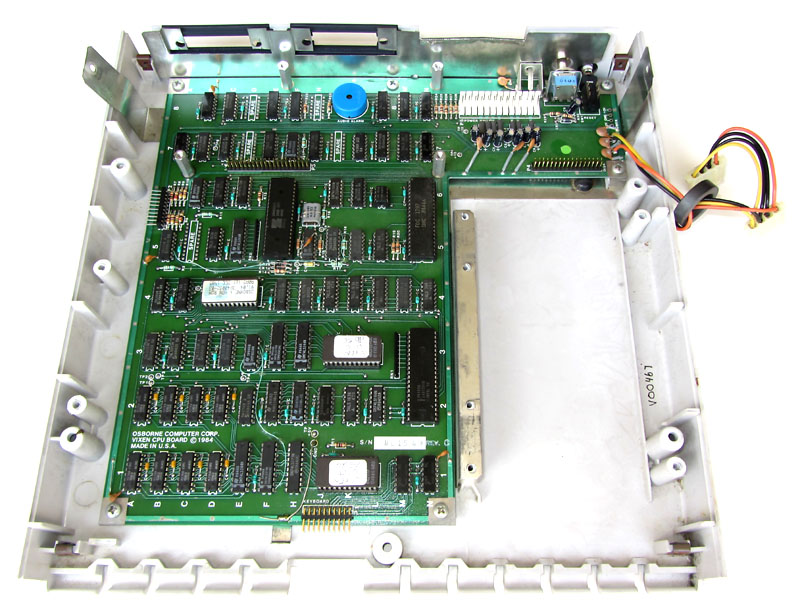Continuing the Osborne tradition of bundling commercial software with their computer systems,
every Vixen included, at no extra charge, these software applications:
|
| WordStar | - the world's best selling word processing package |
| MailMerge | - for enhanced printing capabilities |
| SuperCalc 2 | - a powerful electronic spreadsheet |
| Osboard | - an electronic drawing board for business graphics |
| MBasic | - the popular Microsoft BASIC programming language |
| Media Master | - translate data files to over 200 other computers formats, including MS-DOS |
| TurnKey | - automatically starts programs, configures and accelerates the system |
| Desolation | - a horizontally-scrolling video adventure game |
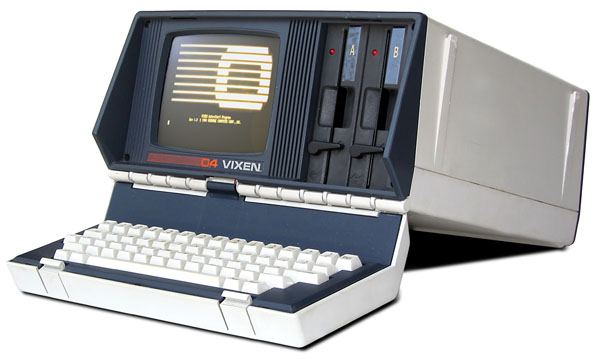



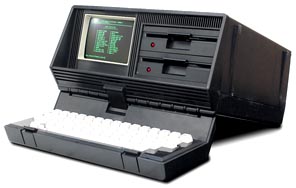 The Osborne Vixen (an ill-tempered or quarrelsome woman) was conceived as the "evolution of the revolution" -
the latest and greatest of the popular Osborne portable computer systems,
which first hit the market three years earlier in 1981.
The Osborne Vixen (an ill-tempered or quarrelsome woman) was conceived as the "evolution of the revolution" -
the latest and greatest of the popular Osborne portable computer systems,
which first hit the market three years earlier in 1981.
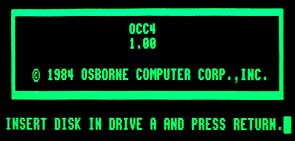 Unfortunately, in September of 1983, the Osborne Computer Company (OCC) ran into financial difficulties,
declared bankruptcy, and the Vixen in its original incarnation was never publically released.
Unfortunately, in September of 1983, the Osborne Computer Company (OCC) ran into financial difficulties,
declared bankruptcy, and the Vixen in its original incarnation was never publically released.
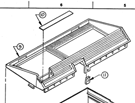 It's not certain how a few of these never-released Vixens escaped into the wild,
but it's been reported that they were stolen by laid-off Osborne employees shortly
after OCC closed the doors.
It's not certain how a few of these never-released Vixens escaped into the wild,
but it's been reported that they were stolen by laid-off Osborne employees shortly
after OCC closed the doors.
